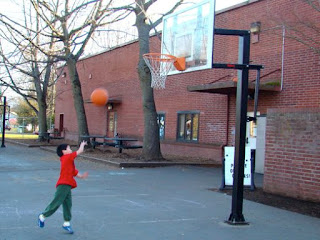Recently, I wrote about the ways in which basing school funding on property values in the United States makes it near-certain that schools will be funded inequitably. Placing decision-making about school funding in the hands of a patchwork of state and local governments simply increases that certainty.
At this point in the discussion, people often will bring up some predictable objections to any implication that the funding of US schools might be inadequate or ill-advised.
The first one I normally encounter is the one that says, Money doesn’tnecessarily buy a good education.
At this point in the discussion, people often will bring up some predictable objections to any implication that the funding of US schools might be inadequate or ill-advised.
The first one I normally encounter is the one that says, Money doesn’tnecessarily buy a good education.
This is undoubtedly true in some cases—and unfortunately one need look no farther than the Kansas City, MO School District for a glaring, recent example of this precept. In the latter part of the 20th century, the KCMO district went through aprotracted desegregation lawsuit. At the end of this case, it reaped a windfallsettlement of massive proportions, which it proceeded to waste in spectacular fashion.
 |
| Kansas City's East High School had to close early several times in August, because it has no air conditioning. |
With all its newfound wealth, it decided to replace several of its aging, dilapidated schools with new, modern, state-of-the-art buildings. However, very little of this money seemed to go for anything else. Not teacher salaries. Not curricular materials of any substance. And not even all buildings were treated equally. Just last month, two schools in the district had to close early on hot days, because they still aren’t air-conditioned!
No, money and wisdom do not necessarily go hand-in-hand! That said, however, it isextremely difficult to offer a first-class education when you only havesecond-or third-class funding.
Here are some examples of why this is so:
Here are some examples of why this is so:
 |
| At some point, even the best teacher can be overwhelmed by class size. |
Class size: There are people who will hotly argue over how much of a difference class size makes, claiming a good teacher is much more important than class size for student outcomes. I certainly will agree that if you have to focus on only one of those, teacher quality is the one to choose.
But I guarantee you'll get better teaching from any teacher alive, if s/he is not trying to give individualized attention to 40 or 50 students all at once--especially when some of those students don't want to be there or pay attention!
 |
| Technology costs are a burden for nearly any public school. |
A frequent complaint of the business community is that schools are not adequately preparing students with the skills they need to succeed in the business world. Certainly basic math, science, and writing skills are important aspects of that gap--but knowledge of computer skills also is essential.
 |
| The "digital divide" is a direct result of access to resources. |
The "digital divide" between richer and poorer schools is often painfully obvious. However, in my experience even some of the more well-to-do public school districts may find keeping up with technology's costs to be a continual challenge when the state funding is cut year after year.
Other Curriculum Materials and Equipment: Technology isn't the only thing that costs money. Traditional, paper-based books keep going up in price--especially textbooks. So are many other types of necessary school equipment. For example, have you ever priced library-quality equipment of any kind?
One of the traditional complaints of the old, pre-Brown v. Board of Education segregated schools was that the black kids got old, torn-up school books after the white kids were done with them. We like to think we are better off now (though in too many cases we've made way less progress than we want to believe). But then as now, the price tag for high-quality educational materials is more than some schools can afford.
 |
| Field trips can open kids' eyes to the world in unique and powerful ways--IF their school can afford it. |
Museums, zoos, and similar institutions have had to shoulder an increasing share of the costs involved, but both they and schools have felt the pinch of restricted funding, especially since the beginning of the recession.
The "informal learning" offered by field trips, even though it is shown by many studies to be powerful and inspiring, is less and less available where funds are restricted.
Two other areas, building maintenance and teacher compensation, also come with hefty price tags. All too often, this means buildings in poorer districts go unrepaired indefinitely, and teachers are not paid adequately. These are topics worthy of much more space than I have left for this post--but I hope I have made my point.
More money may not always "buy" good education, but it certainly increases the odds that it can happen! And there are minimum levels below which we slash educational budgets at our peril.
PHOTO CREDITS: The school funding graphic is from the website Krug for Wisconsin. KMBC-TV provided the image of the overheated East High School in Kansas City, MO. The cartoon on class size is from Choccy's Blog on Libcom.org. The Cult of Mac blog provided the iPad-with-dollar-signs image. The "digital divide" image is courtesy of the Bridging the Digital Divide with Online Education blog. And the field trip photo is from the City of Gresham, OR website. MANY THANKS to all of them!




